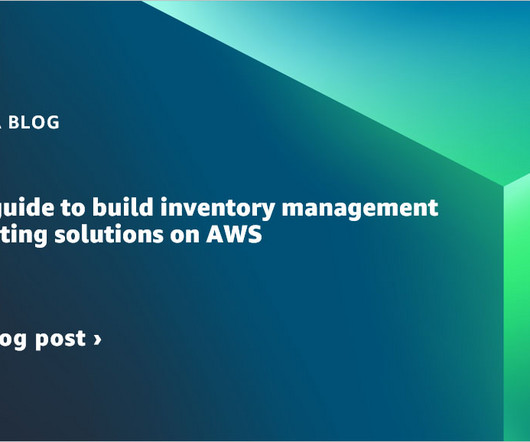Reference guide to build inventory management and forecasting solutions on AWS
AWS Big Data
APRIL 11, 2023
Forecasting is another critical component of effective inventory management. However, forecasting can be a complex process, and inaccurate predictions can lead to missed opportunities and lost revenue. However, forecasting can be a complex process, and inaccurate predictions can lead to missed opportunities and lost revenue.














Let's personalize your content